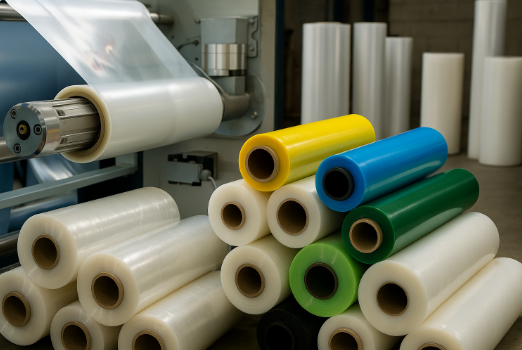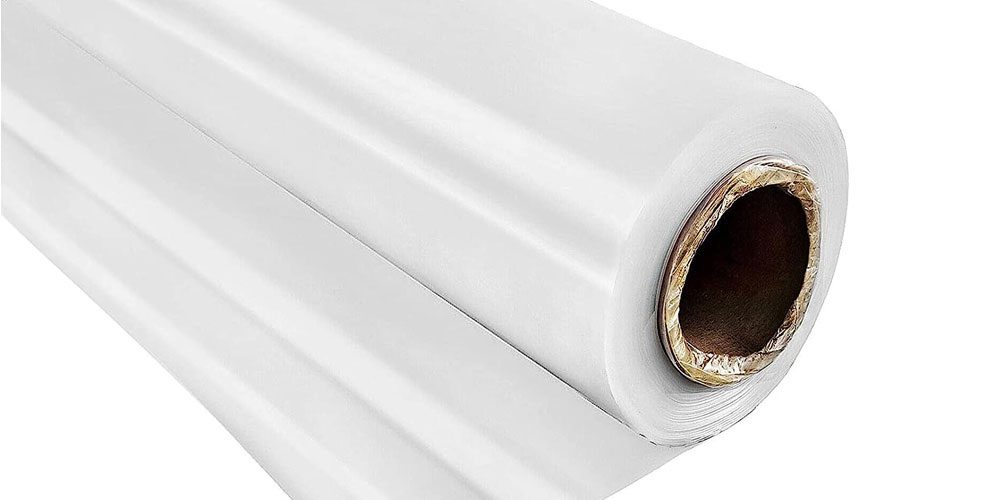One of the most widely used products in the plastics industry is polyethylene film. With its unique features and various additives such as UV protection, anti-fog, and others, alongside its low cost, polyethylene film has become a cost-effective product. These films, available in rolls of various dimensions, offer distinct properties and advantages depending on the needs of the customers. In this article, we’ll explore the applications and benefits of polyethylene film.
Introduction to Polyethylene Film
Polyethylene films are a type of wide, rollable plastic formed at high temperatures using specialized equipment. Depending on the quality of raw materials, they are available in both opaque and transparent models. The lower the quality, the lower the cost, making these films more economical for non-sensitive industries. Polyethylene itself is a polymer produced in various forms, including high-density and low-density types, which result in different properties.
To purchase polyethylene film, it is crucial to first consider factors such as the type and quality of raw materials, and then evaluate physical specifications like color, thickness, dimensions, and the number of layers based on the intended use. Generally, polyethylene film refers to a moldable plastic that melts at temperatures between 120°C and 200°C. It is shaped into a film with high flexibility and durability, making it an essential material for various industries.
Applications of Polyethylene Film
Polyethylene film, based on the type of raw materials and its physical characteristics, is widely used across industries and has become an essential part of daily life. Thanks to its production in various sizes and with different additives, it provides customers with the flexibility to choose a product tailored to their needs.
Polyethylene films primarily serve as a protective layer, safeguarding products from external factors, thus preventing damages. Additionally, they assist in the packaging of goods to ensure product safety during transportation. Major applications of polyethylene films include:

- Packaging agricultural products.
- Packaging goods in the food, clothing, and automotive industries.
- Acting as a protective cover in the construction industry.
- Creating greenhouses.
- Packaging industrial tools.
In general, any industry requiring durable, dust- and moisture-resistant coverings for its goods can customize polyethylene films according to its specific product needs.
Features of Polyethylene Film
The unique features of polyethylene film have significantly increased its usage across various industries. These features, combined with numerous advantages, make it a cost-effective option for the storage and transportation of goods. Some of the key features include:
- High flexibility.
- Transparency and color adaptability.
- Soft and moldable nature.
- Resistance to external factors.
- Barrier against moisture, dust, and more.
- Printability.
- Sealing capability.
- Availability in various widths and thicknesses.
- Option to produce in different colors.
- Compatibility with additives.
These features, combined with additional properties introduced through additives, provide numerous benefits such as structural strength, ease of shaping, protection against weather changes, and more. Along with its affordability, polyethylene film ensures cost-effective storage and transport solutions.
Pricing of Polyethylene Film
Determining the price of polyethylene film depends on several factors, with the most important being the type and quality of raw materials. Typically, polyethylene film is produced using raw materials classified into three quality grades:
- Grade 1 materials: Made from virgin materials, offering higher quality and cost, primarily used in sensitive industries like food packaging.
- Grade 2 and 3 materials: Produced from recycled materials, with certain weaknesses addressed through additives, making them versatile under various conditions. These are mostly used in non-sensitive industries, offering lower costs to meet specific needs.
In general, the price of polyethylene film varies depending on the manufacturer and global market rates for raw materials. Therefore, it is recommended to fully assess your business needs and consult with manufacturing companies to gather detailed information about their services and product pricing. Comparing products across manufacturers will help you choose the best supplier
Conclusion
Over time, the applications of polyethylene film have grown to the extent that it is now a staple across various industries. With its low cost and wide range of features and advantages, polyethylene film has become a primary and essential requirement for manufacturers. It is available in diverse options to suit different customer needs.
In this article, we explored the applications and features of polyethylene film to provide you with useful insights into this product. To purchase polyethylene film, simply reach out to Kayhan Plastic consultants, who can guide you in identifying the product that best suits your needs. for more information, please visit home page of Keyhan Plastic.

